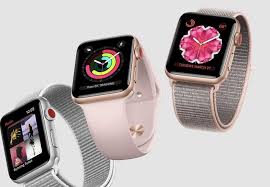 Consider the Apple Watch fall detection age default. Rant on. By now, and for most, no big deal, you may know that the Series 4 watch has fall detection. The setup includes your ‘emergency contacts’ acquired from your Medical ID, assuming you have Wrist Detection turned on. Still with me? And perhaps you have also turned on the Health app (somewhere) and entered your birthdate. Still with me? Assuming that Apple knows your date of birth AND it is 65+, the default setting turns the Fall Detection feature on – you then have to turn it off. Which, since it is set to call Emergency Services unless you Cancel, might, as it has been with Apple Watch emergency calls, be a problem.
Consider the Apple Watch fall detection age default. Rant on. By now, and for most, no big deal, you may know that the Series 4 watch has fall detection. The setup includes your ‘emergency contacts’ acquired from your Medical ID, assuming you have Wrist Detection turned on. Still with me? And perhaps you have also turned on the Health app (somewhere) and entered your birthdate. Still with me? Assuming that Apple knows your date of birth AND it is 65+, the default setting turns the Fall Detection feature on – you then have to turn it off. Which, since it is set to call Emergency Services unless you Cancel, might, as it has been with Apple Watch emergency calls, be a problem.
We do not know much about Apple’s public response to older adults. I am sure they believe themselves to be age-agnostic, despite their oxymoronic growing focus on health (half of US health spending is for individuals age 55+). Consider if you like that the median age in the company is 31. The Apple Watch leads competitors in the watch category (prior to the Series 4). Studying the Accessibilities pages (and the photos) – the focus on younger folk – suffice it to say that there are no stereotypical PERS users to be seen. Perhaps ageism (by the young, for the young) is at the core of their culture, which in our society would not be surprising.
So what’s with the 65+ default? Did they believe the misleading 2015 CNN graphic about Apple's most generous buyers being old men? Translate: that would be men aged 65+. No joke, they are spending more on Apple products then other ages. How, uh, non-stereotypical of CNN’s headline writer. Guess they did not read last year’s Stanford study basing old age on the statistical risk of dying within 1 year (answer: old for men = age 70+, 73 for women). Let’s think about what it means for a technology to have a ‘default’ based on age. Imagine if there was a maximum speedometer setting on a car based on age in which the car throttles itself back to the speed limit. After all, the dealer likely has seen the buyer’s driver’s license.
We get it – Apple is cool, the buyers should be cool. Allow for the case that a Series 4 watch buyer is age 65+ AND worries about falling AND does not mind pinging the fire department AND actually noticed the default AND thought it okay to contact emergency services (aka 911) or skip through the wearer's list of emergency contacts, all of whom may be out on a Safari. But this ageist assumption that defaults to “ON” just may come as a surprise to the physically active 65-year-old who just wanted to have the very latest cool-looking fitness watch. Why? Because they feel young and fit. Tell that to those young whippersnappers at Apple. Rant off.
from Tips For Aging In Place https://www.ageinplacetech.com/blog/apple-accidentally-shines-light-its-technology-ageism
 It’s that awful time – the hurricane season. The time when the national hurricane center repeated forecasts, repeated ad nauseum, are
It’s that awful time – the hurricane season. The time when the national hurricane center repeated forecasts, repeated ad nauseum, are  Vacations and out of office messages – it must have been August. Some have said that there is no point in attempting a business meeting, even online, for August. Perhaps you were one of the 5 million visitors to Cape Cod, roaming the hillside vineyards in California or attending an antique car auction on the coast of Maine. Having managed to pull off two of those three in the same month, it’s not that crazy. But there were issues, disruptions and sizable opportunities worth noting in August, the biggest one was Best Buy's purchase of GreatCall, just six weeks after
Vacations and out of office messages – it must have been August. Some have said that there is no point in attempting a business meeting, even online, for August. Perhaps you were one of the 5 million visitors to Cape Cod, roaming the hillside vineyards in California or attending an antique car auction on the coast of Maine. Having managed to pull off two of those three in the same month, it’s not that crazy. But there were issues, disruptions and sizable opportunities worth noting in August, the biggest one was Best Buy's purchase of GreatCall, just six weeks after